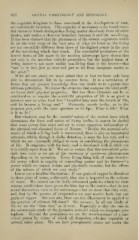Page 512 - My FlipBook
P. 512
522 DENTAL EMBRYOLOGY AND HISTOLOGY.
the vegetable kingdom to those concerned in the development of man,
are continually in action. This capacity of movement is the broad essen-
tial character which distinguishes living matter absolutely from all other
matter, and makes a clear-cut boundary bet\veen it and the non-living.
It has been claimed that the phenomena of the minute organisms which
lie on the very verge of the vast area of what we know as the living
are not essentially different from those of the highest points in the area
of the non-livino- which thev touch. The wonderful revelations of the
lowest forms of life made by the modern microscope have shown that
not only is the assertion entirely groundless, but the highest form of
living matter is not more unlike non-living than is the lowest—that
"one is, in fact, just as near and just as far from inorganic matter as
the other."
With all our study, we must admit that at best we have only been
able to demonstrate life in its concrete form. It is a correlation of
forces that our present knowledge does not enable us to separate into
ultimate principles. We know the elements that compose the vital stuff;
we know their physical properties. But Jiow these elements can be so
combined as to acquire the wonderful properties of life is as great a
mystery now as when God first " breathed into man the breath of life,
and he became a living soul." Humanity stands to-day, as in the
remotest past, with the same question on its lips : What is life ? What
is it to be f
But whatever may be the essential nature of the central force which
determines the form and action of living bodies, it cannot be denied
that some power does exist and act in every organism independent of
the physical and chemical forces of Nature. " Besides the material sub-
stance of which a living body is constructed, there is also an immaterial
principle, which, thougli it eludes detection, is none the less real, and to
which we are constantly obliged to recur in considering the phenomena
of life. It originates with the body, and is developed with it, while yet
it is totally apart from it." We are as certain that this inscrutable prin-
ciple does exist as we are of the constancy of species—a phenomenon
depending on its operation. Every living thing tells of some wonder-
—
ful power which is capable of controlling matter and its forces "a
power which we cannot isolate and physically examine, but the effects
of the actions of which we may study."
Let us use a familiar illustration : If one grain of copper be dissolved
in three pints of water, a distinctly blue tint is imparted to the volume
of water. AVe cannot see the finely-triturated j^articles which by their
minute subdivisions have given the blue tint to the water—they do not
reveal themselves even to the microscope—but we know that they exist,
and that by the j^rocess of evaporation we may receive back our one
grain of coj)per. But you ask. How can this illustration be applied to
the question of ultimate life-force? We answer: In all our study of
life we see the " blue tint," as it were. Especially is this the case in
the microscopic study of the formative material which we designate pro-
to])lasm. Beyond the protoplasm we see the manifestations of a uni-
versal power by virtue of which all formation, whether vegetable or
animal, takes place. AVe see how protoplasmic atoms act under the


